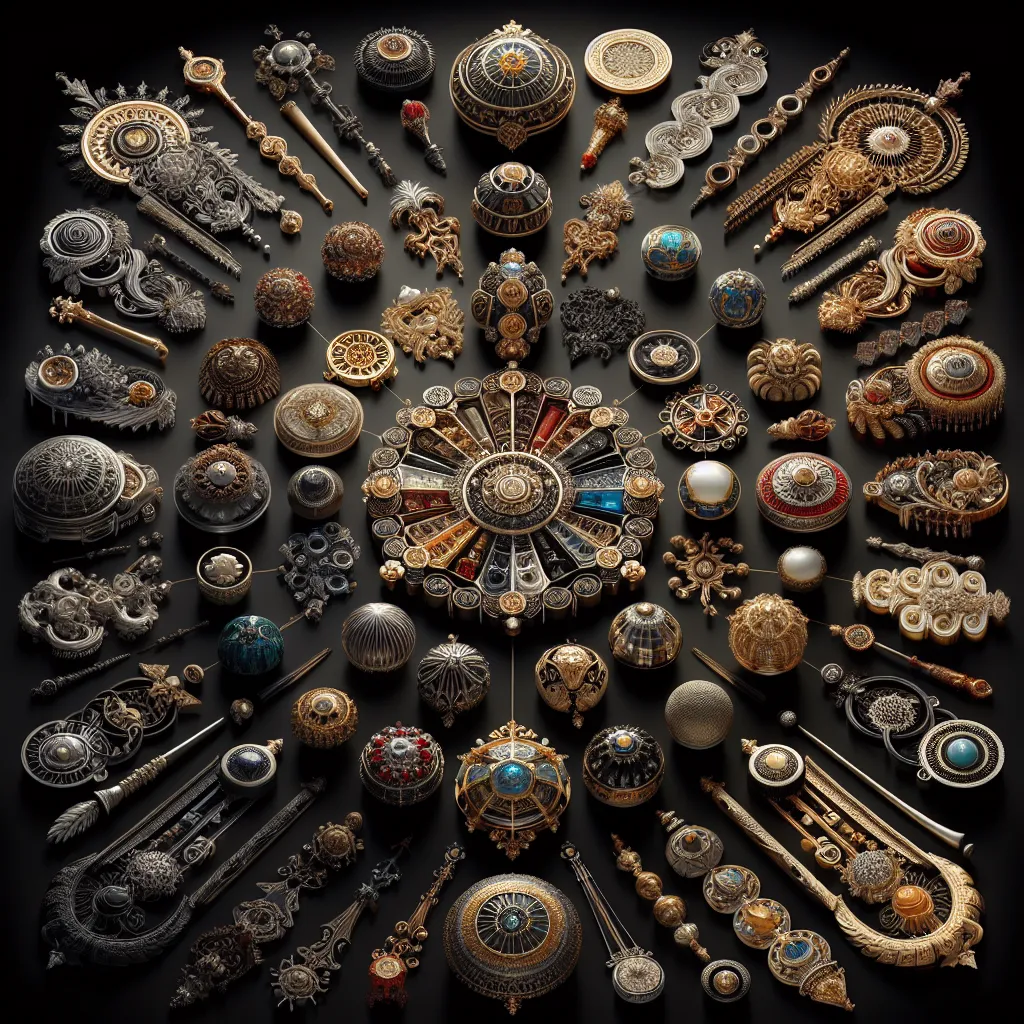The Ancient Origins of Ornamental Art
Ornamental art has a rich and ancient history, dating back to the earliest human civilizations. The origins of ornamental art can be traced back to ancient cultures such as the Sumerians, Egyptians, and Greeks, where artisans and craftsmen incorporated decorative elements into their creations. These early ornaments were often symbolic, representing religious beliefs, deities, and cultural motifs. The use of ornamental art was not only confined to visual aesthetics but also served as a means of communication and expression.
Ancient ornamental art spanned a wide range of mediums, including pottery, jewelry, architecture, and textiles. Intricate patterns, geometric designs, and stylized motifs were prevalent in these ancient ornaments, demonstrating the craftsmanship and artistic abilities of early civilizations. Additionally, the use of precious metals, gemstones, and vibrant pigments added an element of luxury and opulence to ornamental art, establishing its significance in both decorative and symbolic contexts.
Furthermore, the evolution of ornamental art was influenced by cultural exchanges and trade routes, leading to the fusion of different artistic styles and motifs. This cross-cultural exchange contributed to the diversification and innovation of ornamental art, paving the way for the development of unique regional styles and techniques.
In conclusion, the ancient origins of ornamental art provide a fascinating insight into the artistic achievements of early civilizations. The intricate designs, symbolic representations, and cultural significance of ancient ornaments have laid the foundation for the evolution of ornamental art across different periods and artistic movements, shaping its enduring presence in art and design.
The Influence of Ornaments in Different Cultures
The influence of ornaments in different cultures is a fascinating aspect of art and design history. Through the centuries, various cultures have developed unique styles and motifs that are reflected in their ornaments. From the intricate geometric patterns of Islamic art to the nature-inspired motifs of East Asian designs, ornaments have played a significant role in expressing cultural identity and aesthetic values.
In Islamic art, the extensive use of geometric patterns in ornaments is a reflection of the Islamic ban on depicting living beings in art. These patterns, known as arabesques, are characterized by intricate interlacing lines and symmetrical designs, creating a sense of harmony and unity. They are widely used in architecture, textiles, and decorative arts, showcasing the importance of mathematics and geometry in Islamic culture.
In East Asian cultures, ornaments often feature motifs inspired by nature, such as flora and fauna. Traditional Chinese ornamentation, for example, incorporates symbols of longevity, prosperity, and good fortune, often depicted through motifs of peonies, dragons, and mythological creatures. Similarly, Japanese ornaments draw inspiration from natural elements like cherry blossoms, waves, and mountains, reflecting the deep connection between nature and spirituality in Japanese culture.
Furthermore, the intricate carvings and motifs found in African tribal art tell the stories of community, spirituality, and daily life. These ornaments are often deeply symbolic, representing a rich cultural heritage and a sense of identity for various ethnic groups across the continent.
The influence of ornaments in different cultures serves as a testament to the diversity and richness of global artistic expression. By exploring the historical and cultural significance of ornaments, we gain a deeper understanding of the values and beliefs that have shaped human creativity throughout history.
Modern Interpretations of Ornamentation in Design
Modern interpretations of ornamentation in design have evolved to reflect the changing aesthetic sensibilities of contemporary society. The history of ornamentation dates back to ancient civilizations, where decorative elements were used to adorn architecture, textiles, and various artifacts. Ornamental designs were often symbolic, representing cultural beliefs, religious motifs, and societal values.
During the 20th century, there was a shift towards minimalism and functionalism in design, leading to a decline in the use of ornate patterns and motifs. However, in the latter half of the century, designers began to reevaluate the role of ornamentation in the creation of visual impact and emotional resonance in their work.
Contemporary designers have embraced a more nuanced approach to ornamentation, combining traditional decorative elements with modern design principles. This fusion has resulted in the creation of visually striking and culturally relevant designs that resonate with a diverse global audience.
Furthermore, modern technology and digital tools have expanded the possibilities for ornamentation in design. Artists and designers can now leverage advanced software to create intricate and dynamic patterns that were previously unattainable. This intersection of tradition and technology has given rise to a new wave of ornamentation that transcends historical boundaries and embodies a sense of innovation.
In conclusion, the modern interpretation of ornamentation in design reflects a synthesis of tradition, innovation, and cultural relevance. As society continues to evolve, so too will the manifestations of ornamentation in art and design, creating a dynamic and ever-changing landscape of visual expression.
The Significance of Ornaments in Contemporary Art and Architecture
Ornaments have played a significant role in the history of art and design, evolving from traditional decorative elements to meaningful components in contemporary art and architecture. In the modern context, ornaments are not merely decorative additions but are deeply intertwined with the overall aesthetic, cultural, and symbolic significance of a piece.
One of the key aspects of the significance of ornaments in contemporary art and architecture is their ability to convey cultural narratives and symbolism. Artists and architects often incorporate ornaments that carry historical or cultural symbolism, providing a layer of meaning and depth to their work. For example, intricate patterns and motifs inspired by traditional artistic styles or indigenous cultural symbols can add a unique sense of identity and heritage to a modern structure or artwork.
Furthermore, ornaments in contemporary art and architecture serve to establish a visual dialogue between the past and the present. By reinterpreting classical ornamentation in a modern context, artists and designers are able to create pieces that are both timeless and innovative. This synthesis of tradition and modernity not only adds richness to the visual landscape but also sparks conversations about the evolving nature of art and design.
Another significant aspect is the role of ornaments in creating immersive and engaging environments. In architectural design, carefully curated ornaments can transform a space, evoking certain emotions or encapsulating a particular theme. Similarly, in contemporary art, ornaments contribute to the overall sensory experience, inviting the viewer to delve deeper into the layers of meaning and craftsmanship embedded within the artwork.
In conclusion, ornaments in contemporary art and architecture hold immense significance beyond their decorative function. They serve as conduits for cultural expression, bridges between tradition and innovation, and tools for crafting immersive experiences. As the intersection of art, culture, and design continues to evolve, ornaments will undoubtedly remain integral to the narrative of creative expression.

